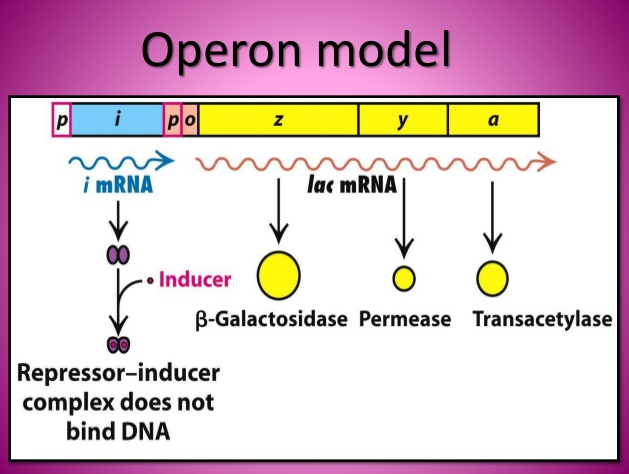Operon model was proposed by Francois Jacob and Jacques Monod.
The operons are the genes that are coded for related protein. Operon consists of a regulator, promoter and the structural genes. Eukaryotic DNA has one operon for one gene that encodes only one protein. Prokaryotic DNA may have one operon for one or more protein as they have small DNA. They may encode two or three protein from the same promoter.
LAC OPERON:
Lac operon is the gene that encodes for three structural proteins. They have
- The regulator that regulates the gene.
- The promoter that starts transcription and translation
- Structural genes that translate into a functional protein
Regulation:
These genes are regulated by inducer and repressor proteins. When the lactose concentration is high, it converts into allolactose. Allolactose works as a repressor protein that stops the transcription. Allolactose binds with the promoter and stops the transcription of the gene. When lactose concentration is low, allolactose de-attach by lactose. Lactose acts as inducer protein and then transcription start. When mRNA forms, it is splice down by post-transcriptional modification. Protein is synthesized after post-transcription modification.
Promoter:
Promoter has TATAAT regions from which the RNA polymerase binds and starts transcription.
Structural genes:
There are three proteins that are encoded by this model. These genes are β-galactosidase, β-galactosidase permease and β-galactosidase transacetylase.


Thanks for sharing. I read many of your blog posts, cool, your blog is very good. https://www.gate.com/share/XwNAUwgM